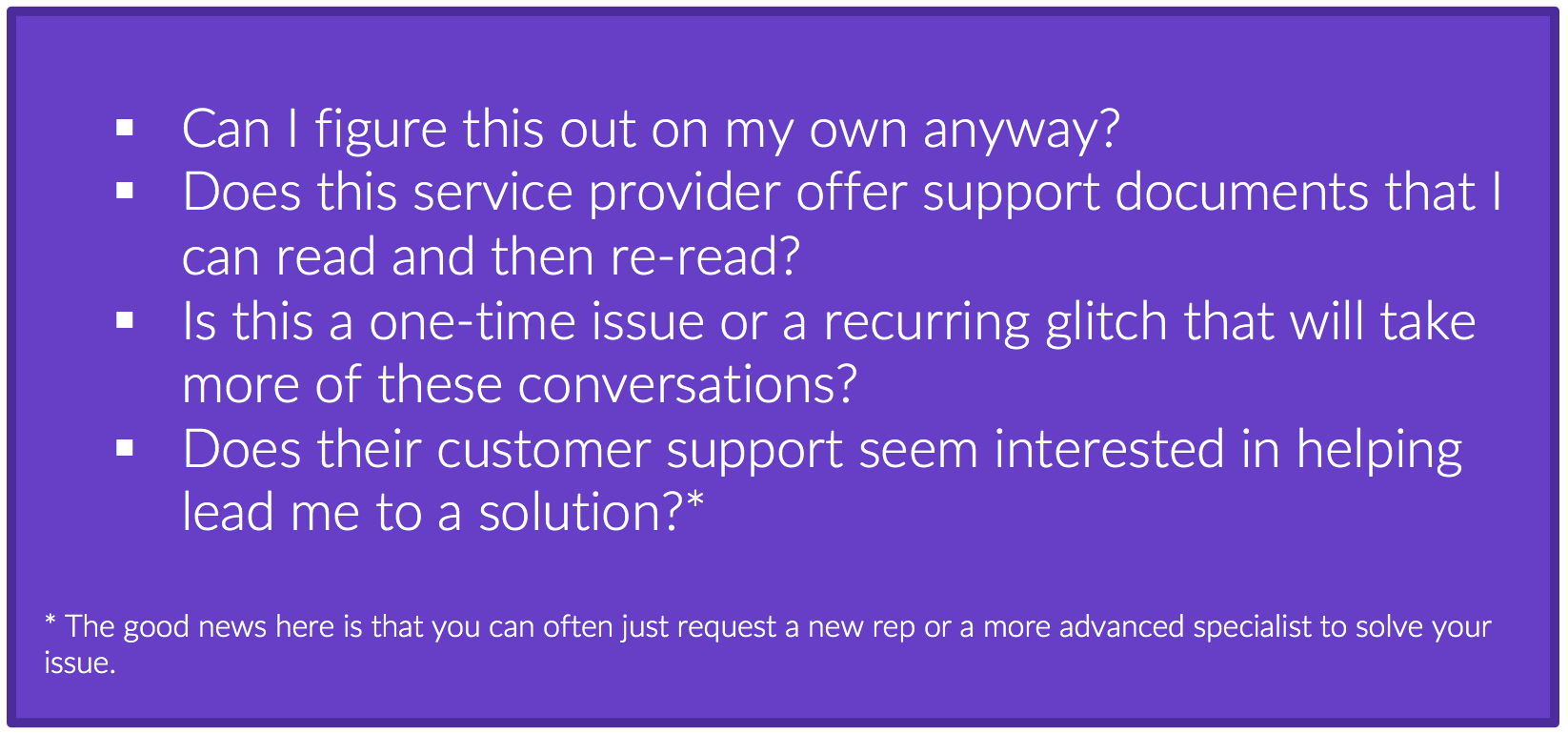One of the best lessons I’ve learned in PPC is that my data cannot work in a vacuum. As much as I’d love to watch the clicks roll in and the conversions rack up, I can’t just close my computer on those metrics. I rely on supporting roles like CRMs, tracking platforms, and lots of different micro conversions for understanding my data.
But there are also times that these costars become more of a thorn in my side than the benevolent assistants I need. So the question then becomes: When do I make the change? How do I know it’s time to use a new service provider?
There are 4 major areas to consider:
So get out your notepad and start sketching out the questions you find yourself asking as you consider if your service provider is really earning its keep.
This is the easy question. Can you afford what you’re doing? If you’re using a call tracking platform that’s more costly than others, but it’s not providing any additional capabilities, this is a good place to start looking. On the other side of this question, however, are you using a free service that you could actually afford to upgrade? A great example of this is for those who use Google Analytics as their primary source of on-site tracking. A full-functioning CRM or analytics platform such as Salesforce or Kenshoo can help with a more comprehensive look at your larger marketing efforts – plus all those delicious PPC details, too.
To play devil’s advocate, there is much that you can do on a tighter budget. Google and Bing both provide tracking and reporting that is sufficient for many businesses. Google Analytics offers multi-channel (albeit, Googlified) data.
For lead tracking, each business needs to identify what it needs and how thoroughly it wants to integrate its data.
The questions to consider in your next step might be:
Although cost may not determine the Yes or No to your decision, it’s an inevitable part of the conversation. There are other components, however, that also play a major impact in how you leverage the opportunity cost of doing things the new or the old way.
The life of a Paid Search marketer is seldom a boring one (if you’re doing it right, that is) – and it may be that you find yourself spending a disproportionate amount of time making your data work for you. This can be especially true for lead generation accounts, where it’s easy to squeeze by with manual lead tracking. But eventually, as you work to improve your performance, things become more complicated.
On the flip side, bigger isn’t always better. Although your first thought may be that a fancier platform is going to provide you with more success, this isn’t always the case.
Many of the analytics platforms we agency folks interact with regularly actually complicate our days more than they simplify them.
Our ads aren’t properly interpreted by their platform.
Our bid changes aren’t compatible with their algorithms.
We still can’t get data by geographic location.
When trying to parse out the opportunity cost of using you current provider, considering these questions:
As you come to terms with the difference between the dataset your service provider is giving and the final product you create, the question begins to build on what data you actually need in this data set.
The next logical step in your search for quality data is the ability to segment your results. I don’t just mean by day of the week. I mean the multi-channel path your traffic comes takes prior to converting. I mean the ZIP code from which that conversion was derived. I mean the paid search keyword, device, or ad message associated with the phone call that turned into a sale.
In paid search, all we have is our data to defend our actions.
When the data isn’t available, we have to make more generalized decisions. And when performance begins to wane, we may not be able to see what exactly isn’t working.
The questions to sort through are perhaps most important for this category.
But all of these segments often don’t create themselves. There’s frequently an integration process that must be taken on. Depending on your technical savvy, the final step of implementation can be a real emotional minefield, requiring just the right assistance.
Now please note that failure to offer proper tech support is no reason to ditch your current provider. Working in customer tech support ranks right up there with nuclear physicists and early childhood educators in my book. I don’t envy their daily challenges.
However, as you work to segment your data as you’ve outlined for yourself, you might hit a few snags. How do you know if a code properly placed? Do you have custom variables that must be added? What about cross-platform integration?
There are few things more challenging than a customer service rep that doesn’t actually understand their own product. In the moment of necessity a less-than-helpful tech rep might make you want to throw in the towel, but before doing that, ask yourself these questions:
The purpose of this article is not to tell you to purchase call tracking or start a contract with an analytics provider. No, instead push yourself to identify your level of need and capability versus the alternatives.
I know in a heated moment of data crunching, I may feel like calling up a tracking provider and giving them an earful, but at the end of the day, I know that the information they’re providing me with is worth a moment of struggle.
What other questions do you ask yourself when those moments of frustration or interest hit? We’re all in this industry together and the more we push our providers for what we want (labels in the editor, anyone?), the more likely we are to receive them!












